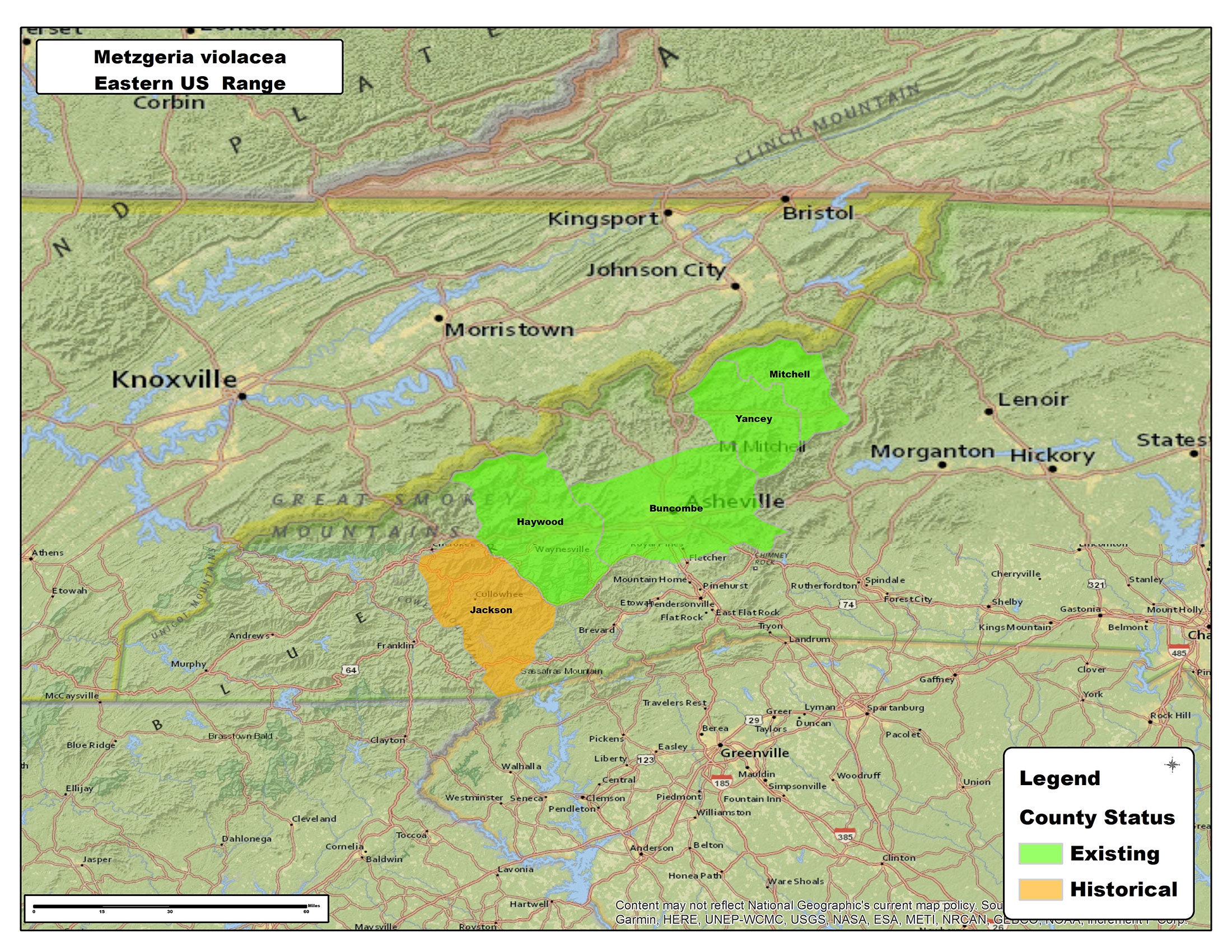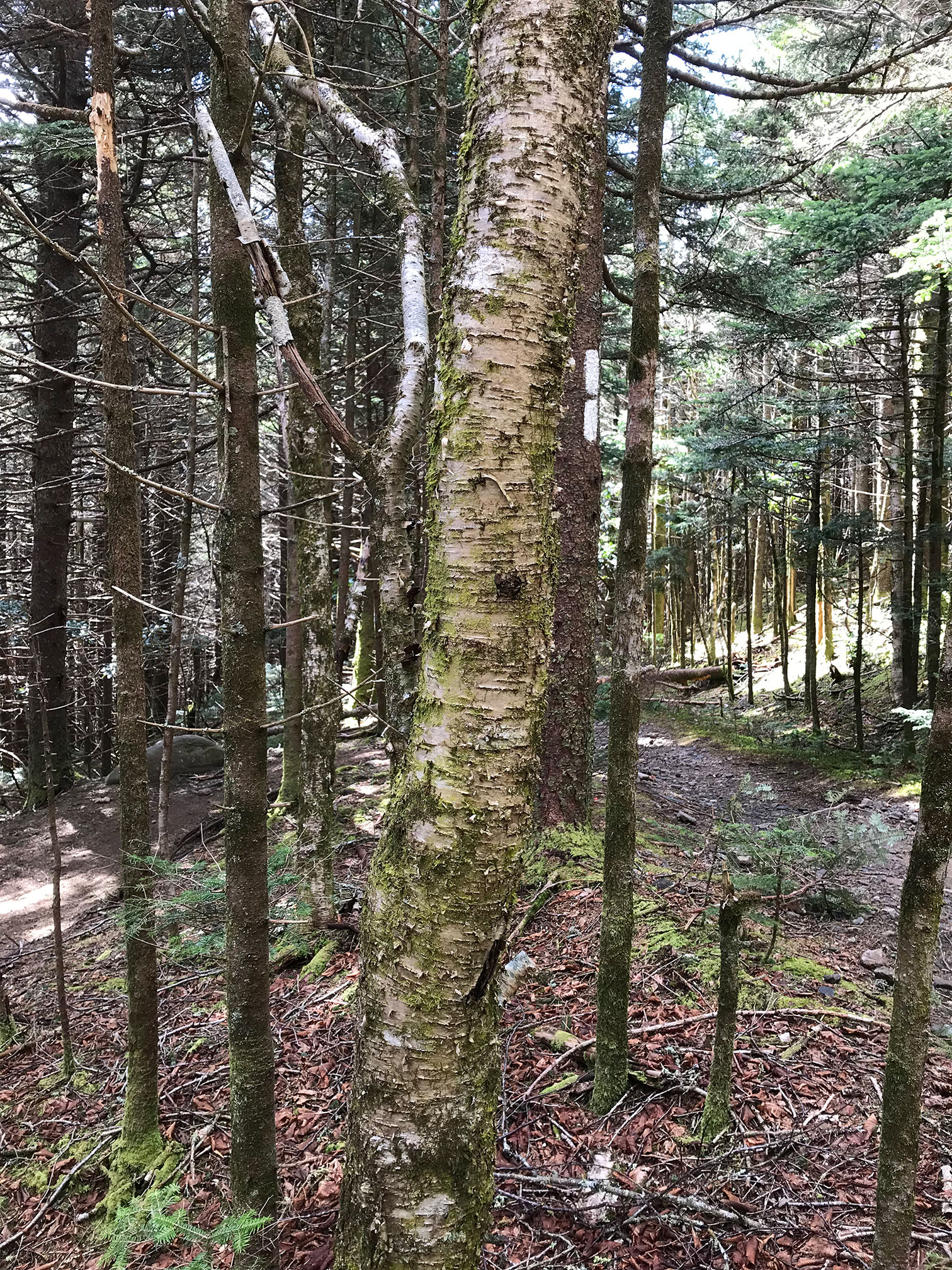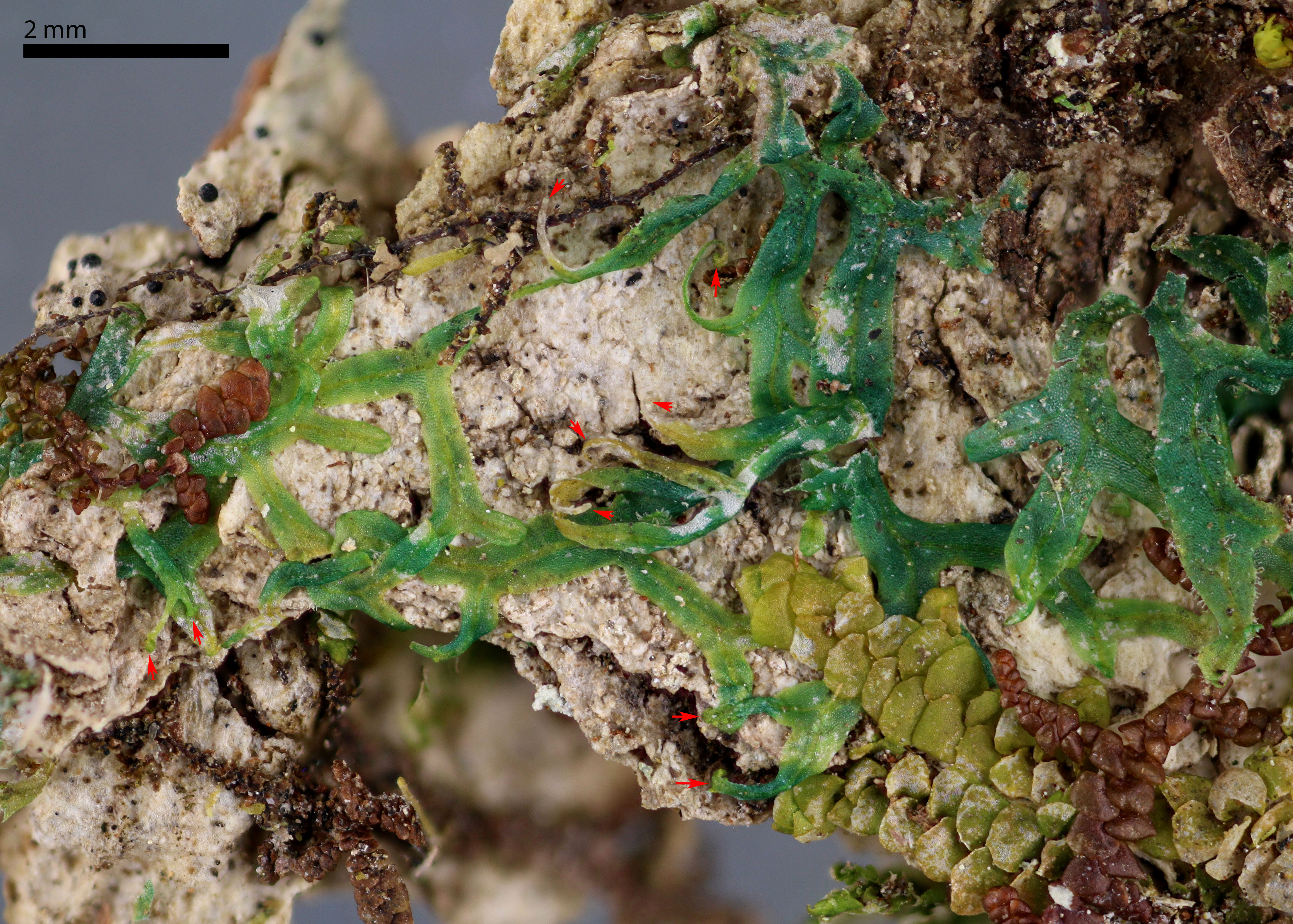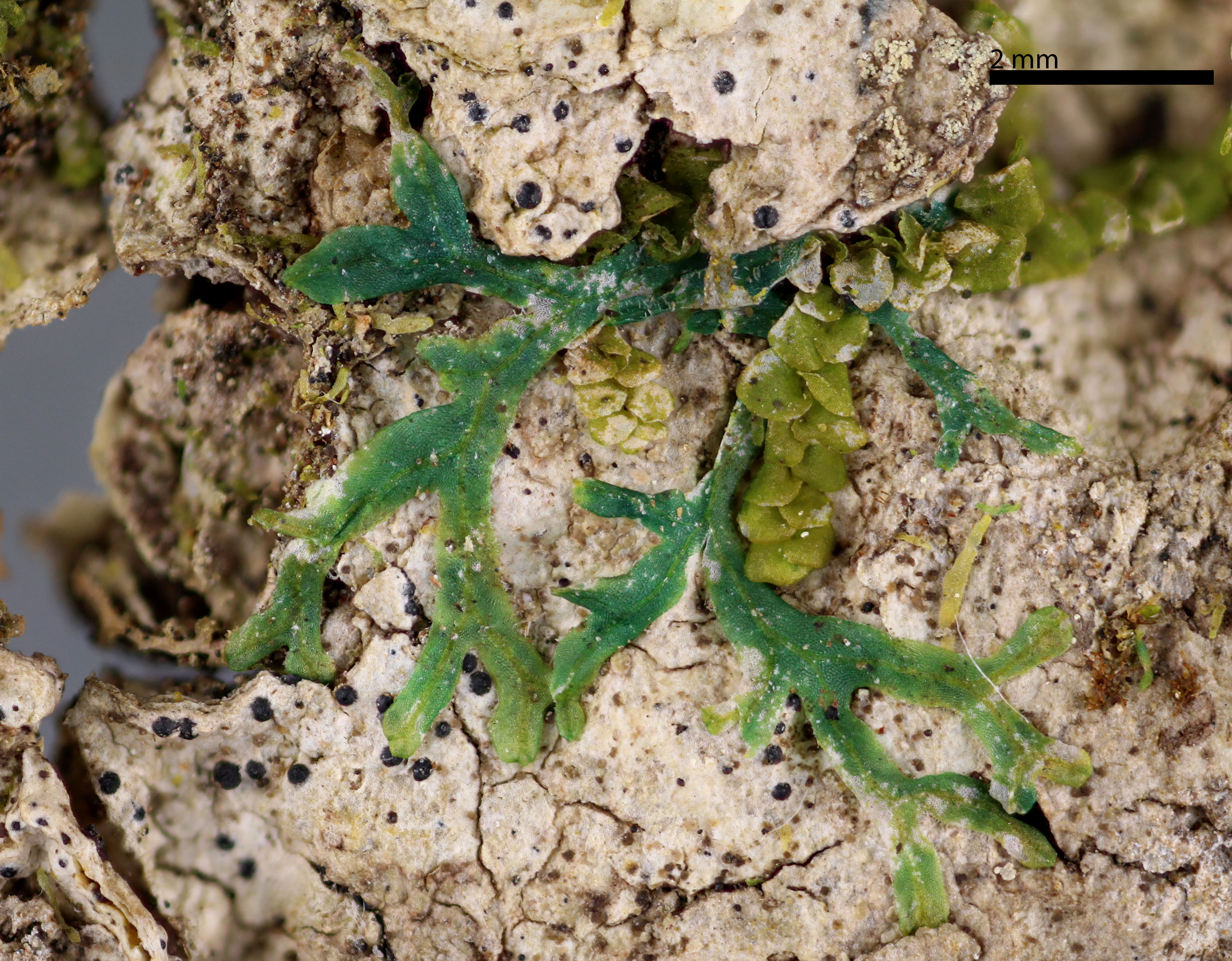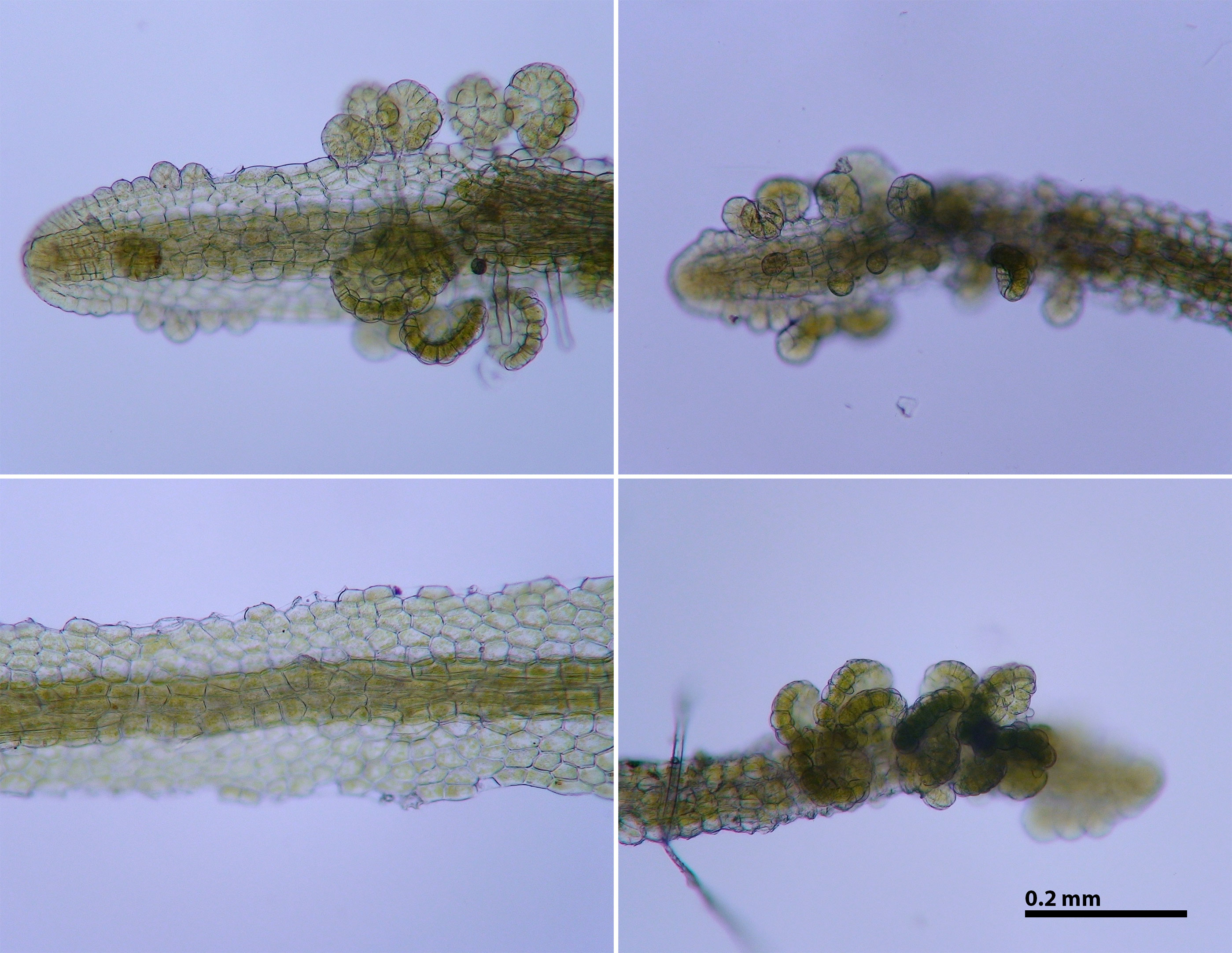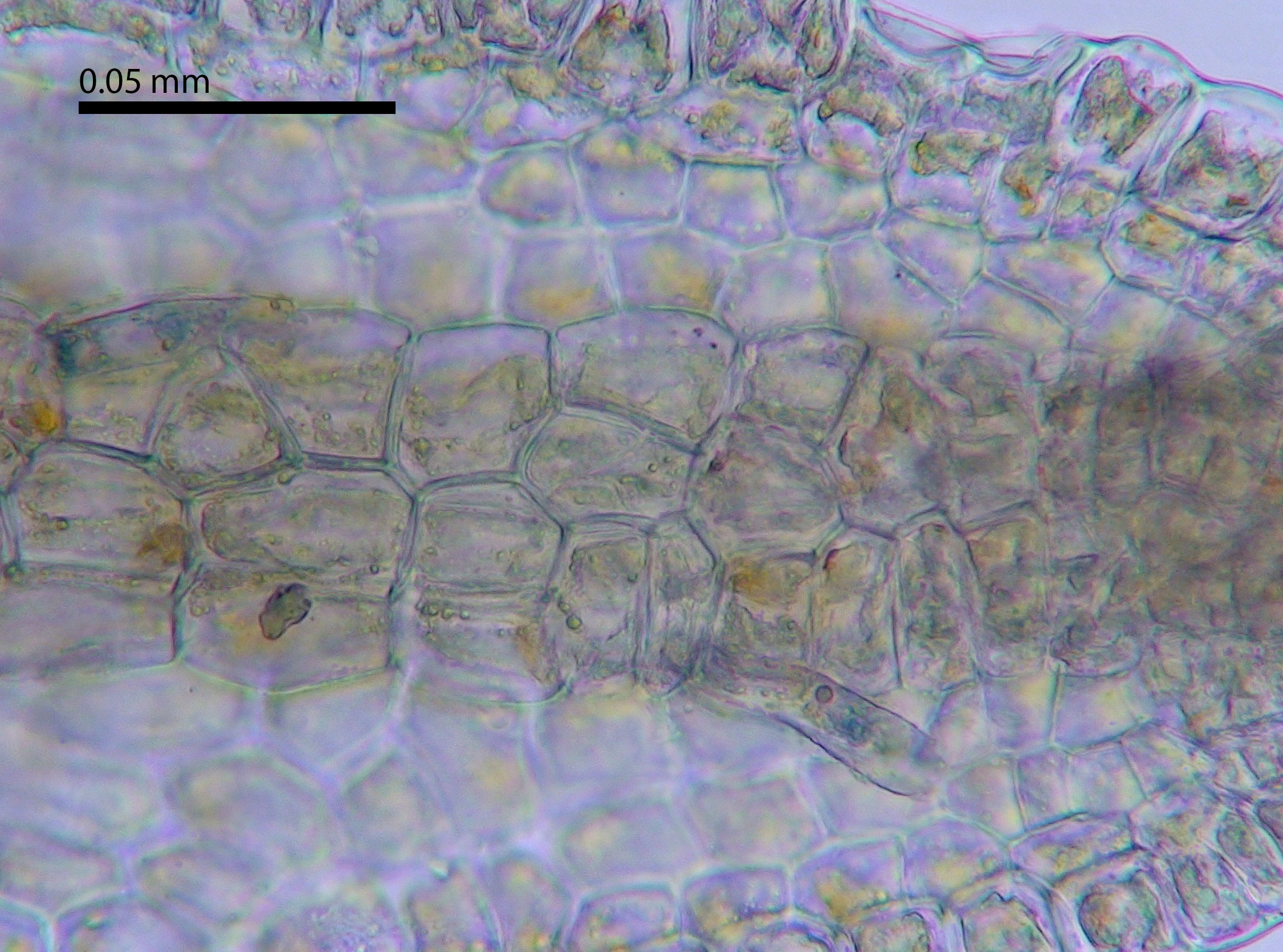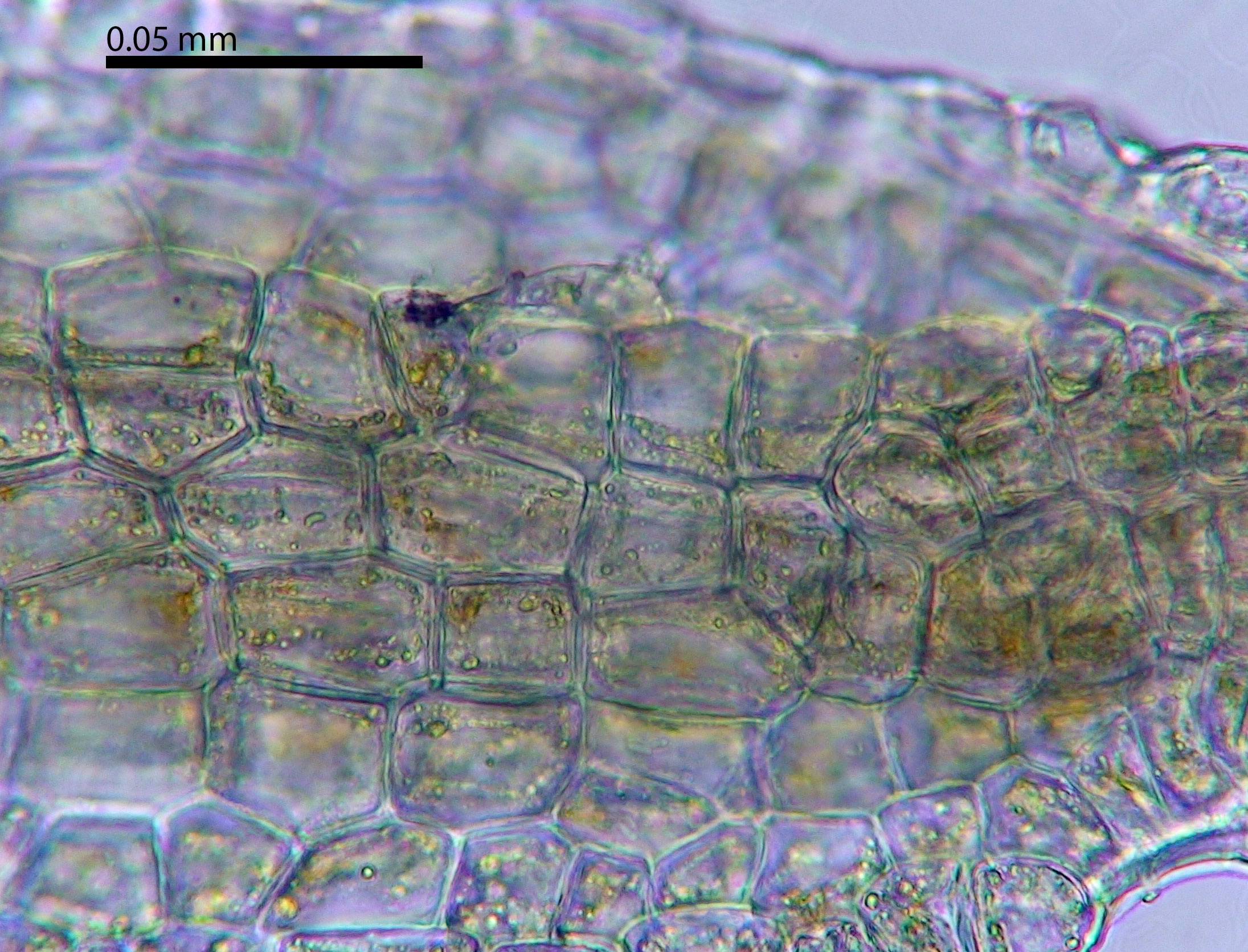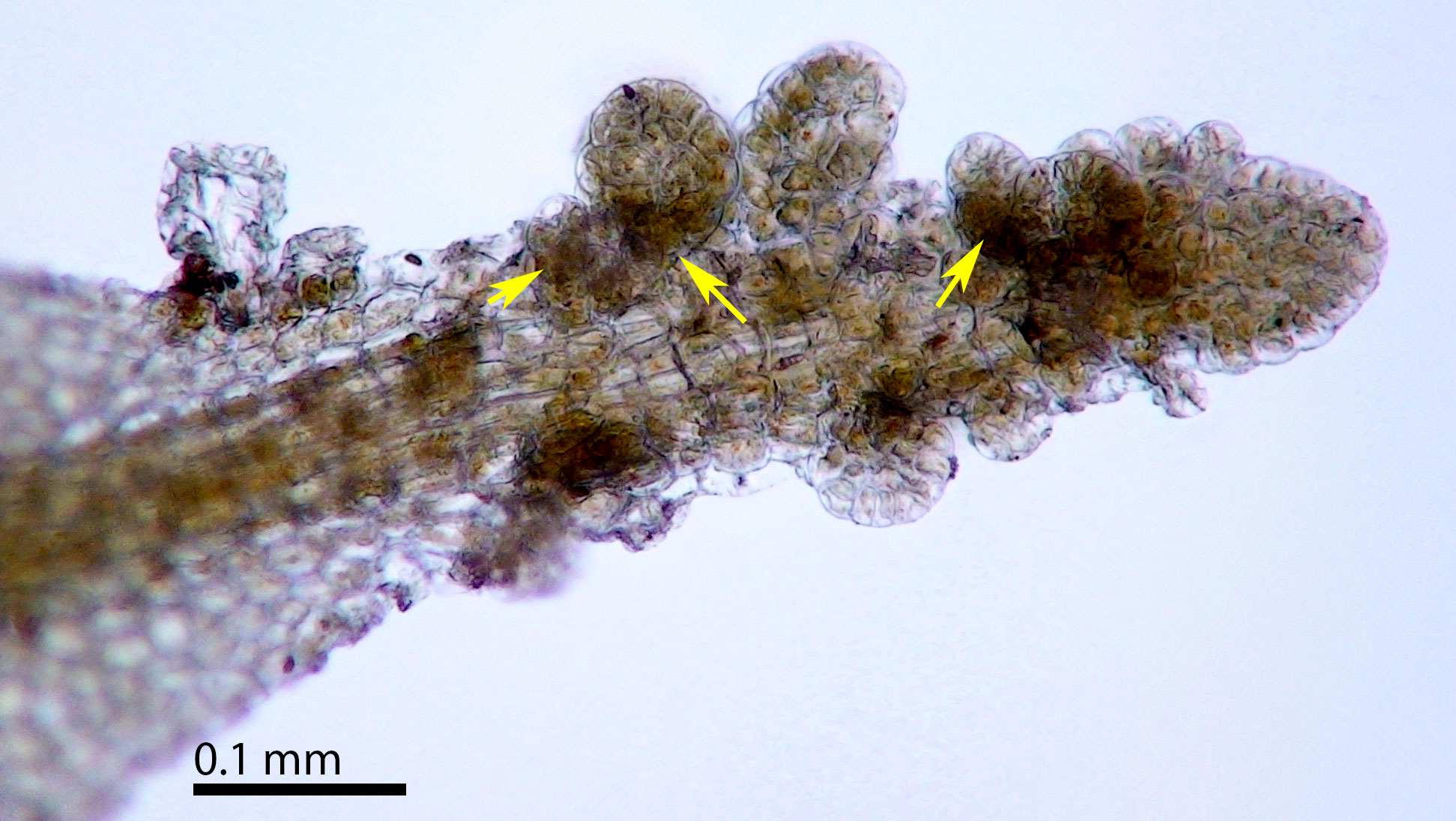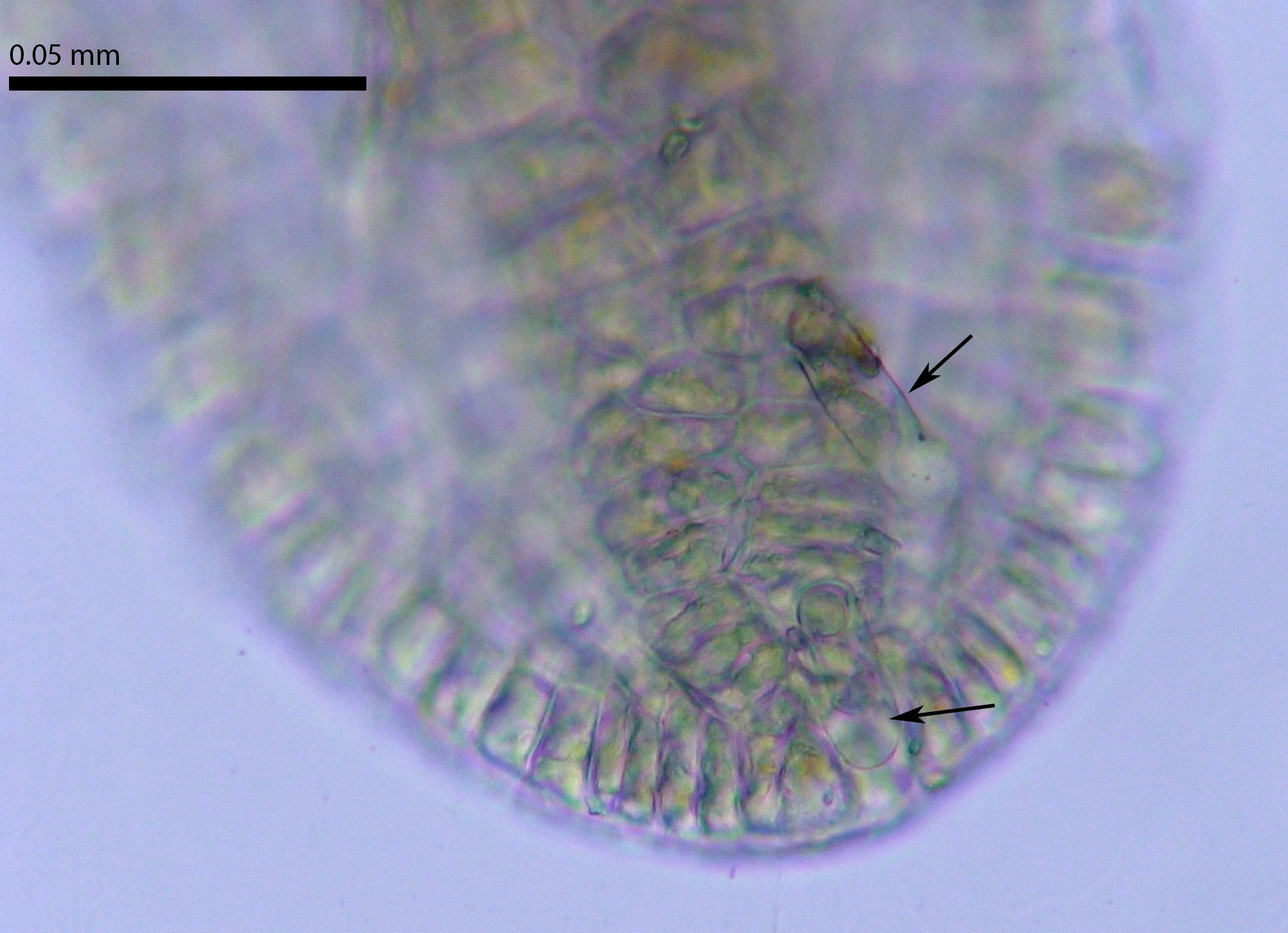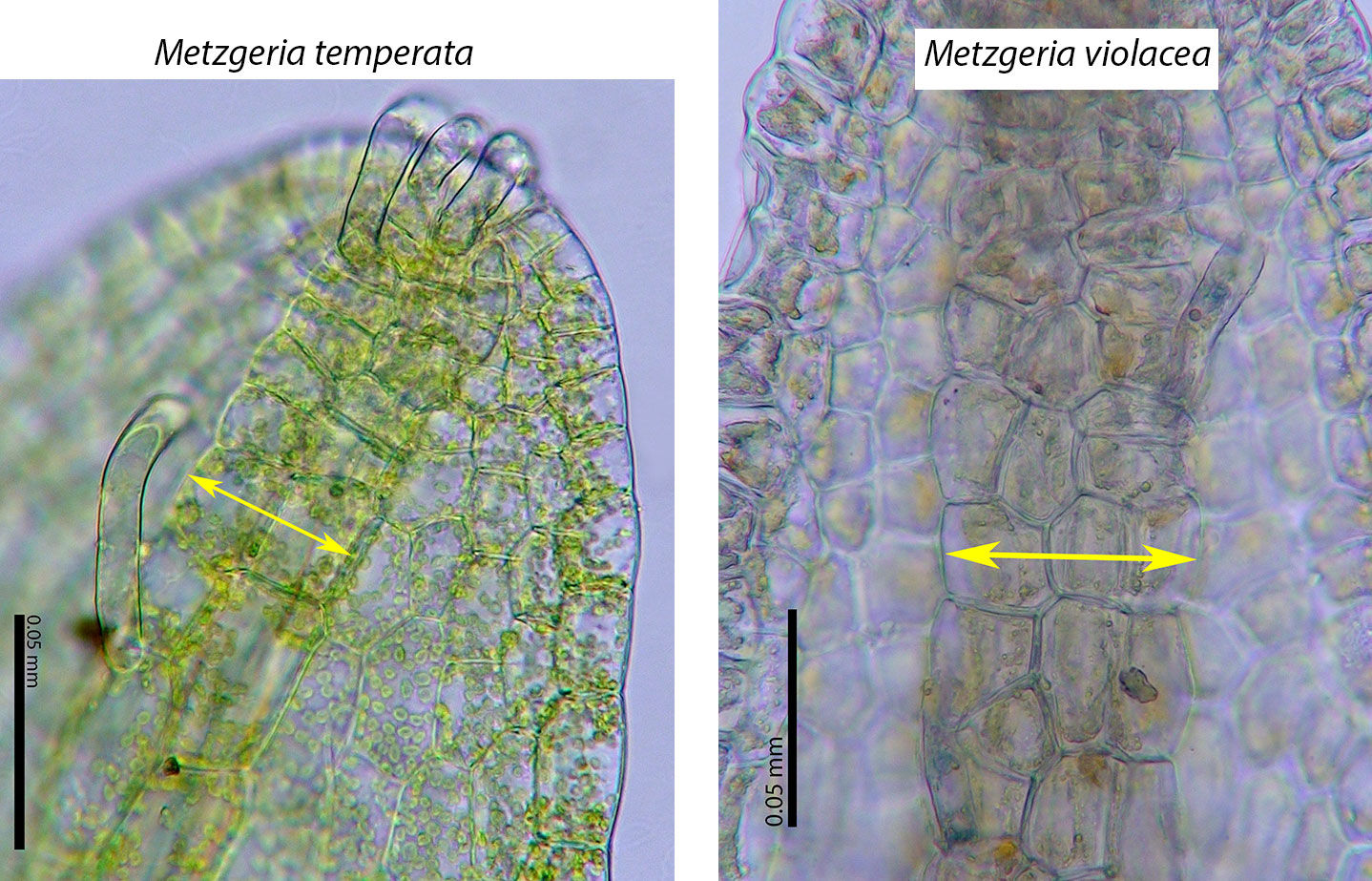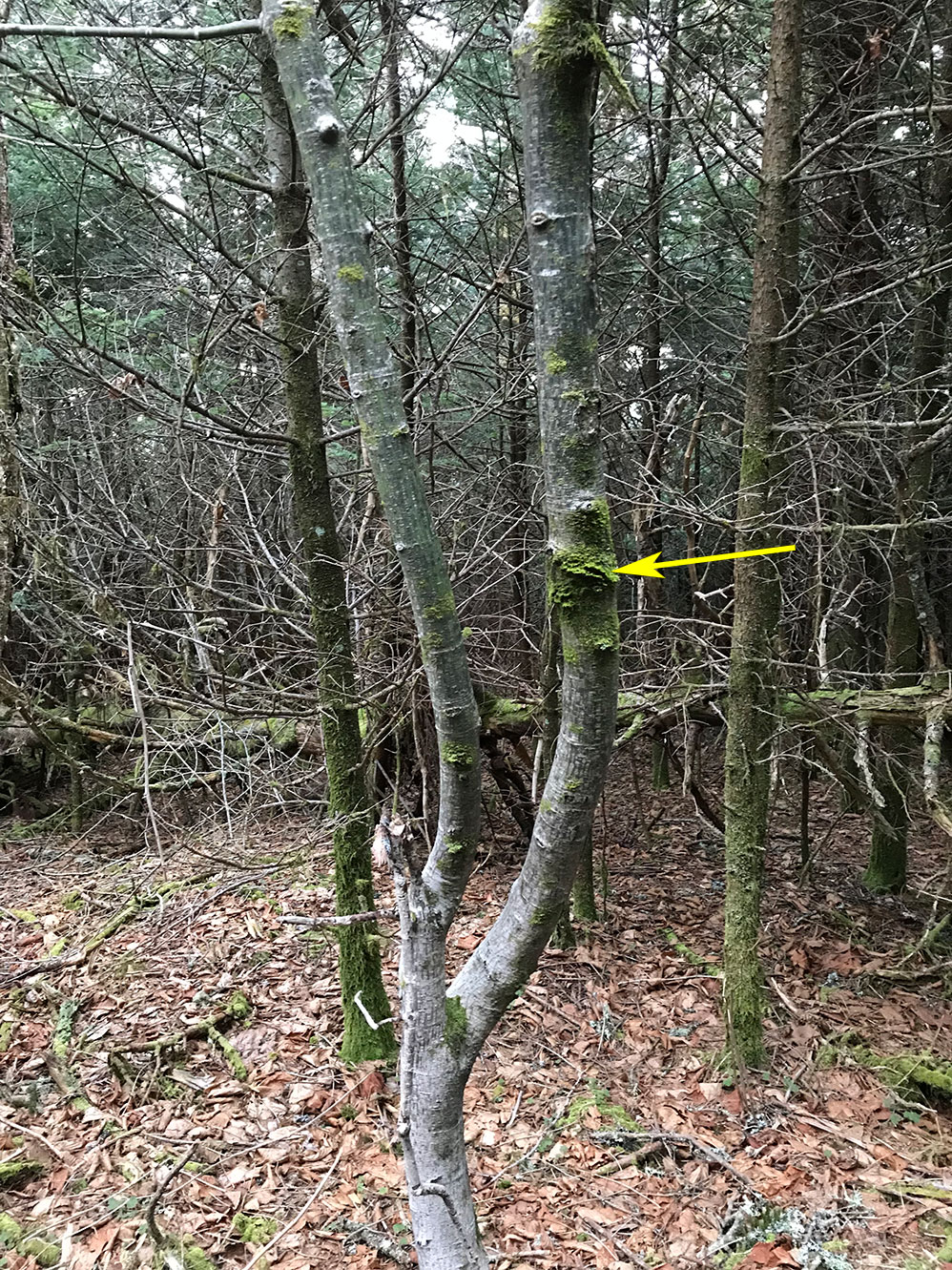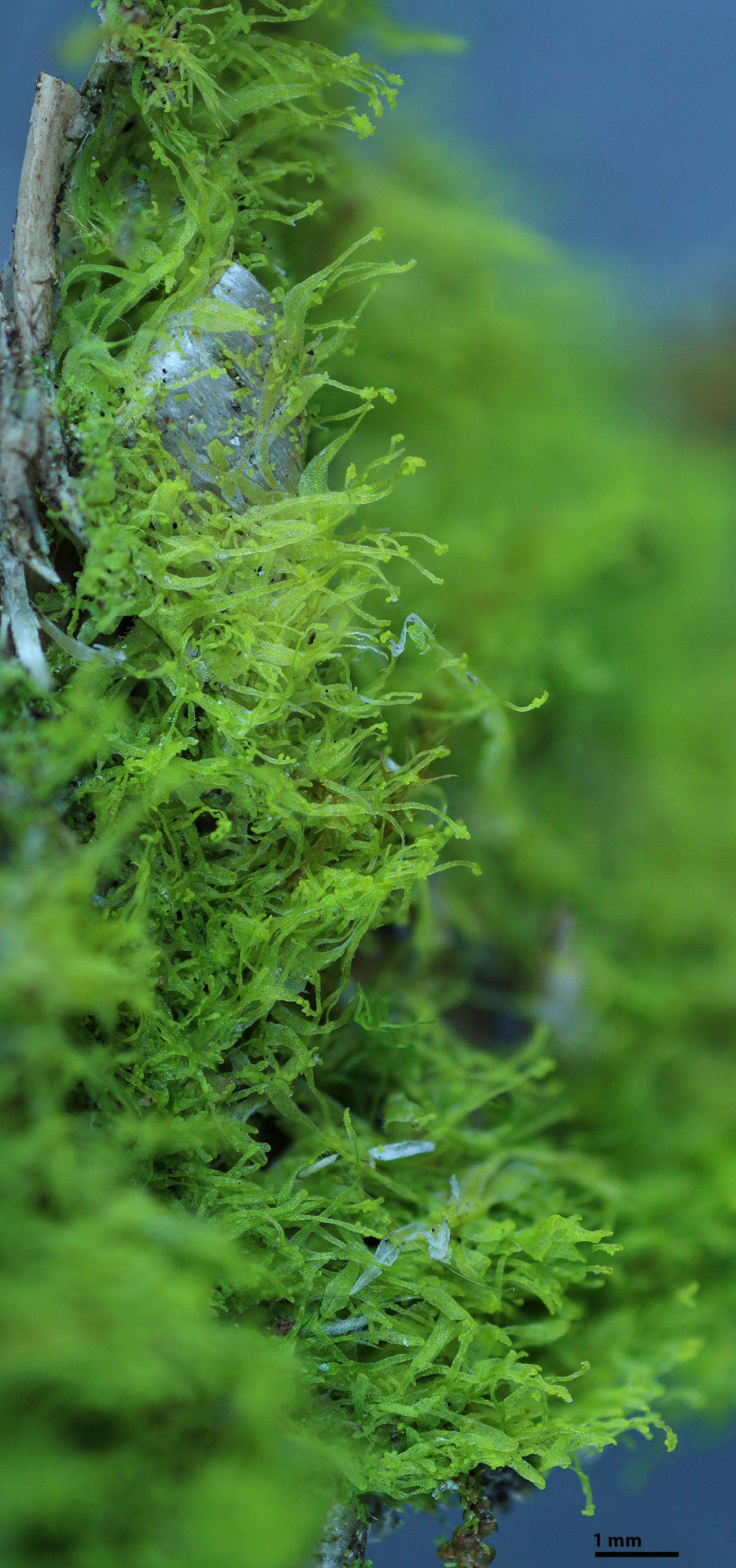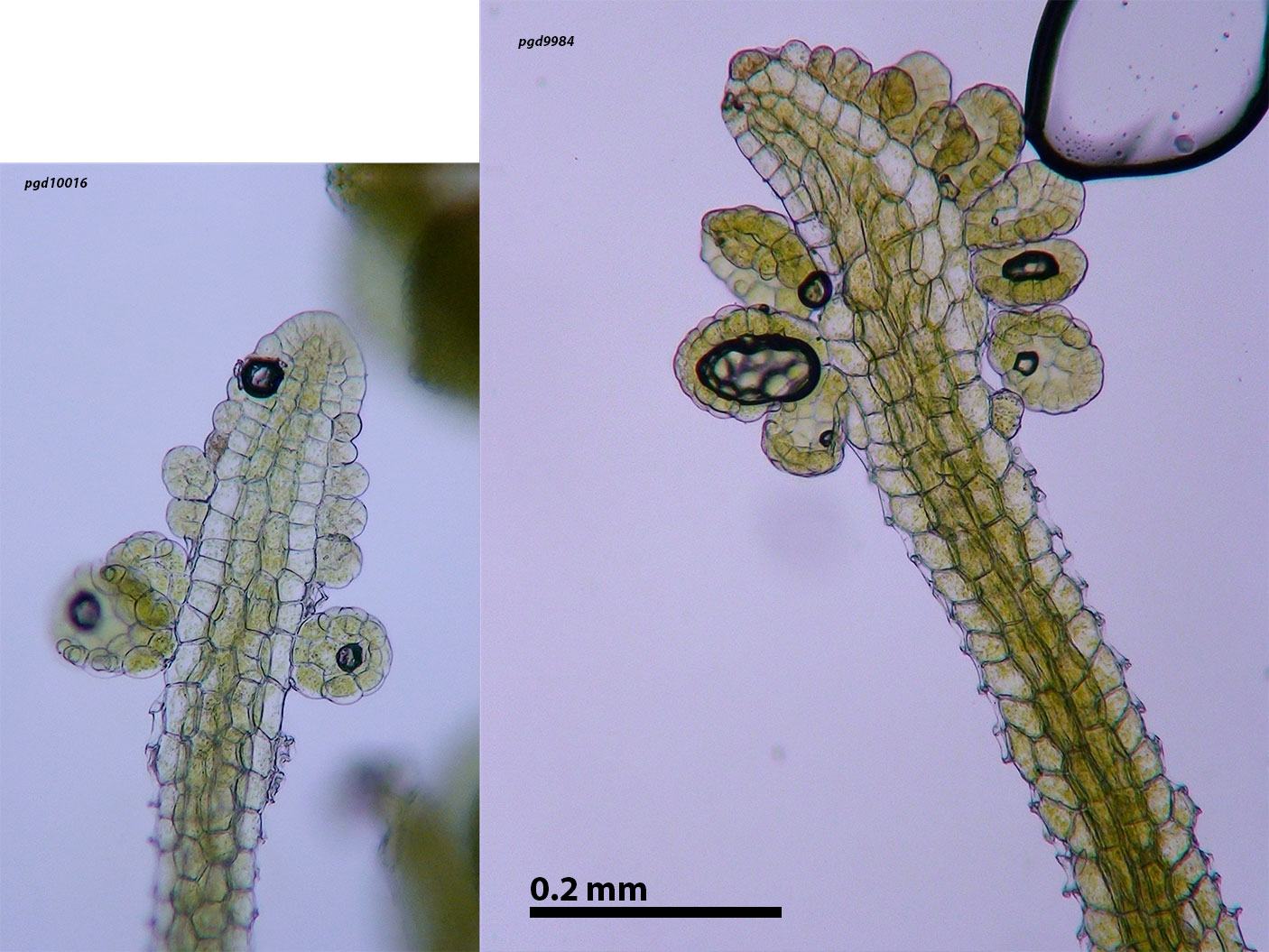Metzgeria violacea (Ach.) Dumort.
Family: Metzgeriaceae
Synonyms
Metzgeria fruticulosa (Dicks.) A. Evans
NatureServe Conservation Status
G4
Distribution
North America. U.S.A.. North Carolina (Grolle and So 2003), California, Oregon, Washington (Exeter et al. 2016). South America and Europe (Grolle and So 2003).
Habitat
In the Southern Appalachians limited to red spruce-Fraser fir forests, high elevation rocky summits, and red spruce-northern hardwood forests. Verified specimens were collected from the bark of the following woody plants, number of times collected in parentheses: Aesculus flava (1), Betula alleghaniensis (3), Fagus (3), Sorbus americana (3), and once on rock. High elevations, above 5500 ft.
Brief Description and Tips for Identification
Plants yellow-green, ribbon-like, furcately branched, thalli up to ca. 1.5 mm wide forming thin mats. Thalli costate with hairs mostly limited to thallus margins and the ventral side of the costa. Plants producing erect, ascending, attenuate branches bearing gemmae near the branch apex, gemmae originate from the laminal margins of attenuate branches and from the dorsal and ventral surfaces of the costa of attenuate branches. Costa of attenuate branches with 3-4 rows of epidermal cells on both the dorsal and ventral sides. Plants usually developing a blue coloration in all or part of the thallus after preservation by drying.
Dioicous. Only male plants documented regionally.
After death of the plants in the herbarium, blue coloration develops variably in time and variably in which parts of the plant turn blue. In regional material blue color development was first detected in as little as 31 days after drying or as long as 7 months after drying. The blue color is permanent (Paton 1999). Not all plants (thalli) turn blue, so the color change can’t be relied upon as the only definitive character. When the blue does develop, the whole plant may turn blue, or only a portion of the main thallus turns blue, or the blue color may be limited to the attenuate tips and the gemmae they bear.
Habitually similar to Metzgeria consanguinea (=M. temperata) with which it may occur. Both species produce erect attenuate branches bearing gemmae and it is difficult to impossible to distinguish the two in the field. Fortunately, the two species--the only regional Metzgeria species producing attenuate branches--can be reliably separated based on the key characters in Paton (1999):
M. violacea . . . costa of attenuate branches with 3-6 rows of epidermal cells [3-4 rows in the Southern Appalachians]; gemmae developing on costa and laminae; dry thalli gradually becoming blue
M. temperata . . . costa of attenuate branches with 2 rows of epidermal cells; gemmae developing only on margin of laminae; thalli never becoming blue
Becky Smucker added greatly to the regional distribution, ecology, and the observed times for postmortem development of blue coloration.
Salient Features
- Plants with erect, ascending attenuate branches bearing gemmae.
- Costa of attenuate branches with 3-4 rows of epidermal cells.
- Dried plants, in part, turning blue after 1-7 months.
References
Exeter, R. L., Harpel, J. and Wagner, D. 2016. Rare Bryophytes of Oregon. Salem District, Bureau of Land Management. Salem, Oregon
Grolle, R., and So, M. L. 2003. Riccia fruticulosa O.F. Müll., 1782 and blue Metzgeria (Marchantiophyta) in Europe. Botanical Journal of the Linnean society, 142(2), 229-235.
Paton, J.A. 1999. The Liverwort Flora of the British Isles. Harley Books, Martins, England
